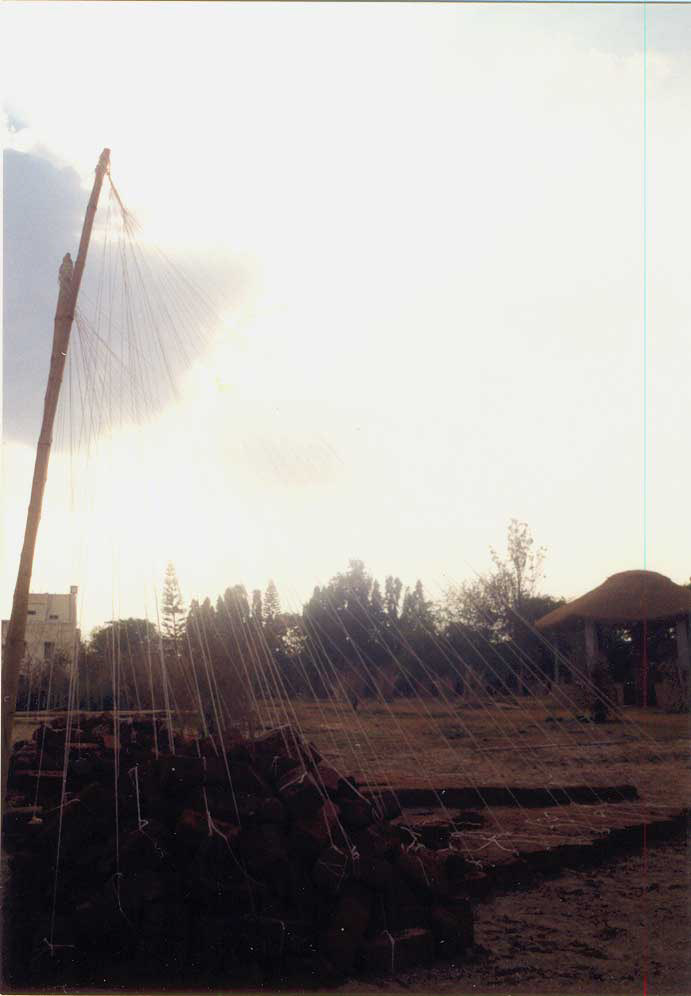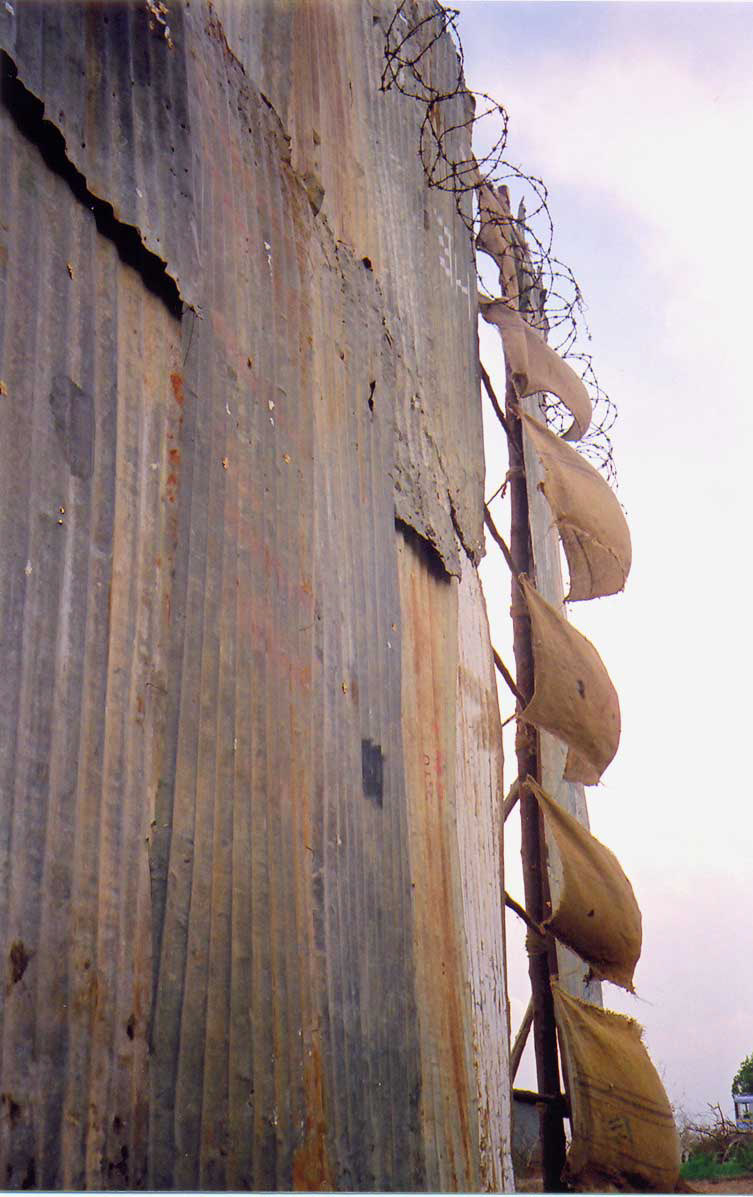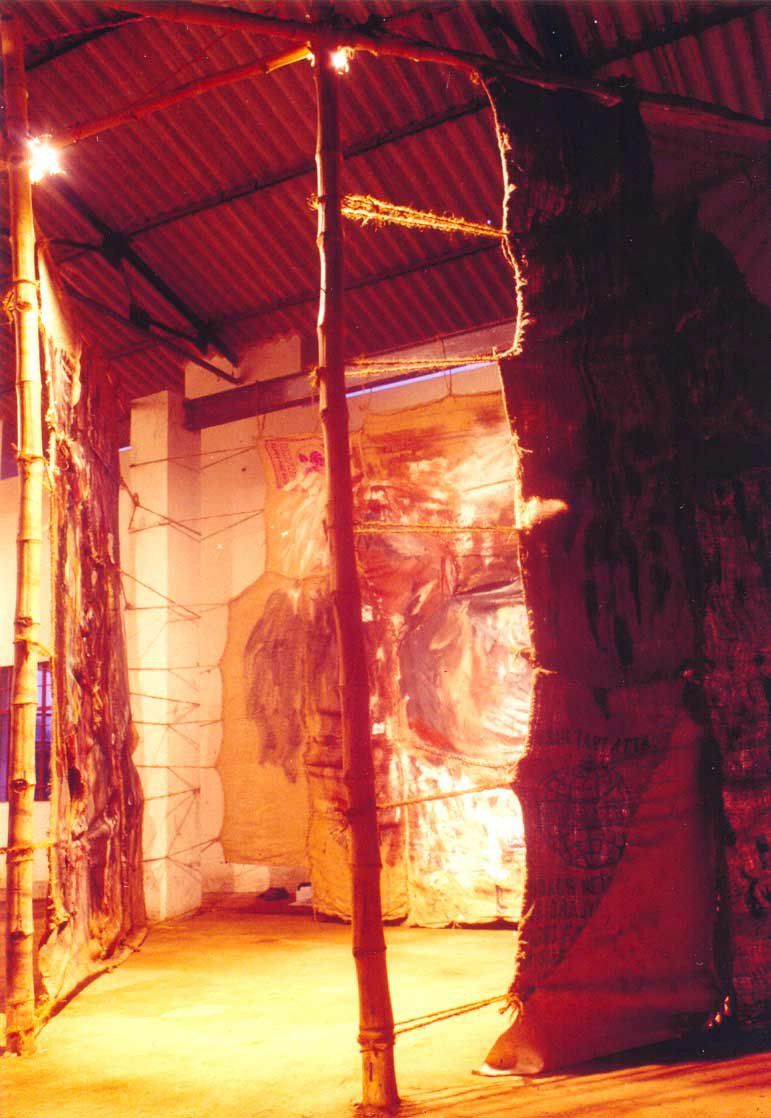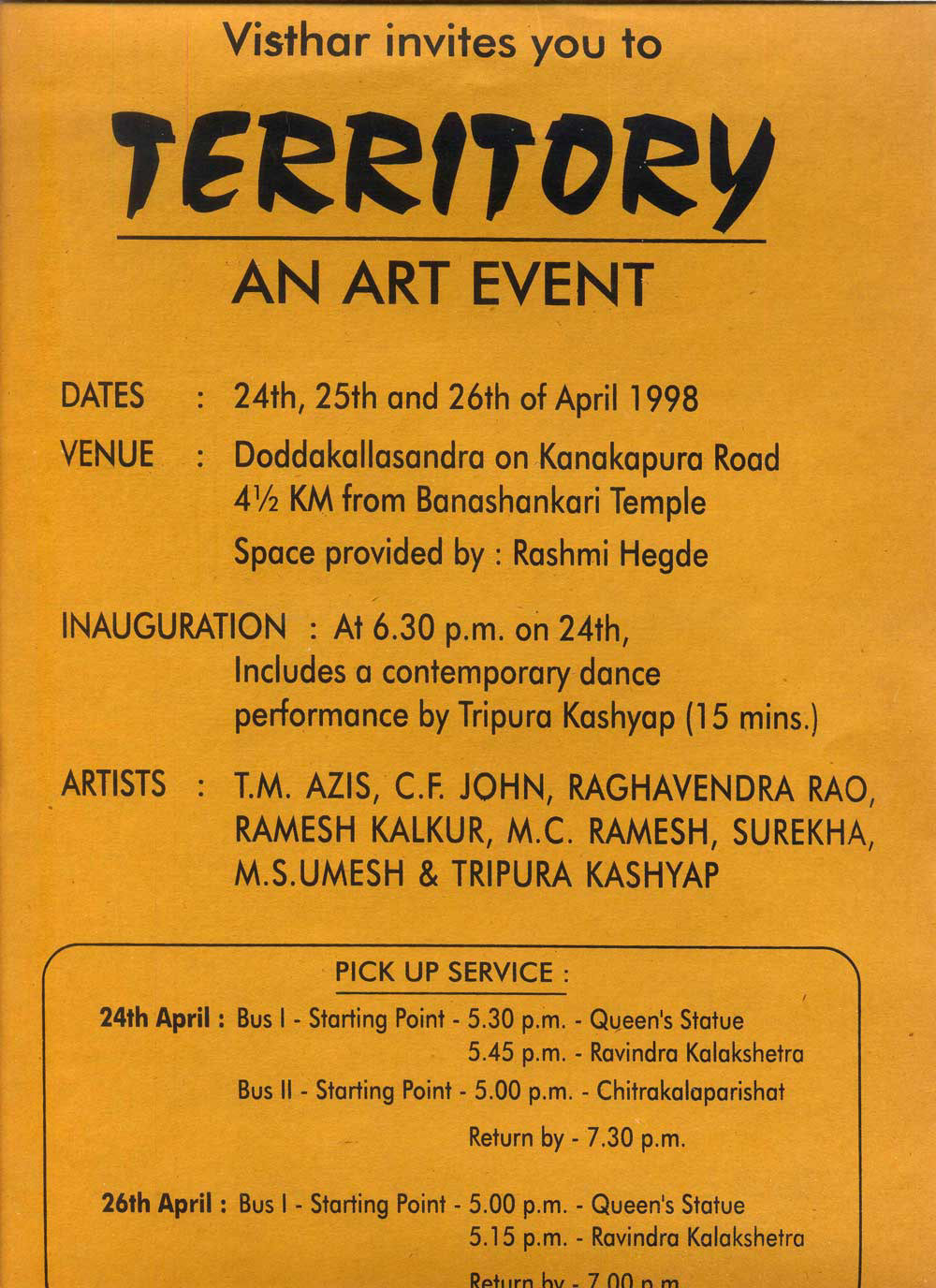C.F.John, Ramesh Kalkur, Tripura Kashyap, Size: 10ft x 10ft x 10ft, Medium: wooden planks, mud, cow dung, acrylic, news paper and video installation.
C.F. John
C.F.John , Tripura Kashyap, Size, 40ft x 20ft x 20ft, Medium: corrugated metal sheets, marked water lines, water, sprouted seeds, barbed wire and gunny cloths. .
Surekha, Frame size: 20ft x 20ft x 15ft ( approx), Medium: photographs, wire mesh, cotton and pigment.
Raghavendra Rao, Size: 10ft x 10ft x 10ft, Medium: gunny cloth, bamboo poles, coconut fibre ropes, photographs and paint, M.C. Ramesh,glass, mud, turmeric and clay – 3ft x 3ft x 5 ft, Photographs by Ramesh Kalkur 3ft x 4ft (3 prints)
Ramesh Kalkur photographs 3ft x 4ft (3 pieces), Surekha, Frame size: 20ft x 20ft x 15ft ( approx), Medium: photographs, wire mesh, cotton and pigment.

Azis T.M , size: 20ft x 15ft x 10ft (approx) , medium: thread, bamboo poles, bricks, mud, pots and water.

C.F.John, Size: 40ft x 20ft x 20f, Medium: corrugated metal sheets, marked water lines, water, sprouted seeds, barbed wire and gunny cloths.

Raghavendra Rao, Size: 10ft x 10ft x 10ft, Medium: gunny cloth, bamboo poles, coconut fibre ropes, photographs and paint.

Invitation
